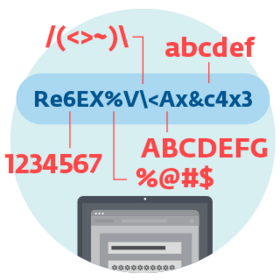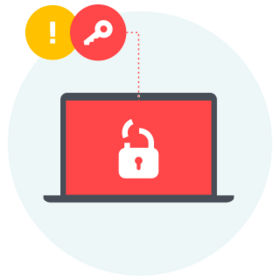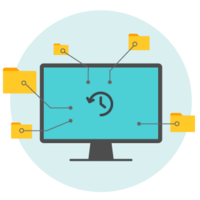Why should SMBs care about passwords?
According to Verizon’s 2017 Data Breach Investigation Report, as many as 81% of data breaches are caused by weak or stolen passwords. Given that more than 5 billion passwords have been leaked online, basic password protection is being rendered ineffective.
And if you think that your organization doesn't have anything to interest cybercriminals, think again. SMBs are the sweet spot for cybercriminals, as they have more valuable data and assets than consumers, yet are more vulnerable than enterprises, which have larger security budgets.
Read more
This problem is amplified by the growing number of businesses incorporating “smart” devices into their IT infrastructure. While the Internet of Things (IoT) helps them to make business operations faster and smoother, these devices are often vulnerable and run with publicly available default admin usernames and passwords, posing a risk that can lead to harmful consequences.
In addition, the new EU General Data Protection Regulation (GDPR)states that organizations of all sizes are to ensure the security of their data by implementing “appropriate technical and organizational measures”. So, if a breach occurs, and only simple and static passwords are in place, a large fine can be expected.
Worldwide, privacy laws and regulations are being tightened. The recently enacted National Data Breach (NDB) reporting requirements of the Australian Privacy Act, and various US states’ privacy regulations with strict data breach reporting requirements, are upping the standards for anyone holding data on residents of those jurisdictions.

How do attackers steal passwords?
1. Simple, real-world techniques include shoulder surfing with attackers observing potential victims when they type their passwords.
2. Attackers also manipulate the “human weakness” of their victims via social engineering. A professionally-crafted online form or an email (phishing attack) apparently from a trustworthy sender can persuade even well-trained users to divulge their passwords.
3. Cybercriminals with foothold in organization’s network can use malware to search fordocuments containing passwords or log password keystrokes and send this information to their C&C server. Black hats can also extract encrypted password files and crack them offline.
4. More demanding attack techniques include intercepting the network traffic of employee devices that are used remotely or in a public place.
5. One of the most popular ways to break password protection is to brute force them. Automated scripts try millions of password combinations over a short period of time until the correct one is found. This is why it has become necessary for passwords to become longer over the years. The more complex the password is, the more time cybercriminals need to guess it.

How to build a good password policy?
To ensure your organization has an effective password policy it’s advisable to follow specific procedures:
- Employees need to be trained on how to create a strong password. »
- IT departments should implement rules when setting and enforcing a company password policy. »
- All organizations are recommended to implement additional protective measures to increase password security throughout the entire organization.
What else can your organization do to protect its passwords?
To better protect the passwords of your organization's employees, use of two-factor authentication (2FA) is recommended. This verifies the account holder’s identity with a one-time passcode – something the user has – in addition to the username and password – something the user knows – thus protecting access to company systems even in cases where the credentials are leaked or stolen.
As SMS and mobile devices are frequently subject to malware attacks, modern 2FA solutions refrain from using SMS verification and instead opt for push notifications, as they are more secure as well as user-friendly. To further increase the security of the authentication process, organizations can add biometry – something the user is – by implementing multi-factor authentication (MFA).
ESET’s powerful 2FA protects passwords
ESET Secure
Authentication
Single-tap, mobile-based authentication provides help in securing your data in a hassle-free way in addition to meeting required compliances. It employs user-friendly push notifications for both Android and iOS, has an easy management, and fast roll-out within 10 minutes. Try now and see how it works.



